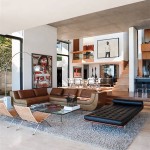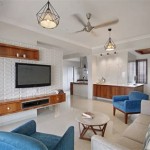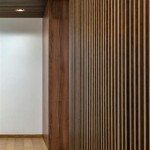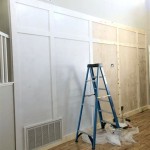Interior Glass Door Ideas: Transforming Spaces with Light and Style
Interior glass doors have become increasingly popular in modern design, offering a seamless blend of functionality and aesthetics. They provide a unique opportunity to enhance natural light, create a sense of openness, and add a touch of contemporary elegance to any space. This article explores various interior glass door ideas, delving into different styles, functionalities, and applications within the home.
The versatility of glass doors allows them to be incorporated into various architectural styles, from minimalist modern to traditional. They can be used to divide rooms without sacrificing light transmission, creating a visual connection while providing acoustic and thermal separation. This makes them an ideal choice for creating flexible living spaces that adapt to changing needs.
From a practical standpoint, glass doors are relatively easy to maintain and clean. They are also more durable than one might expect, especially when constructed with tempered or laminated safety glass. The selection process involves considering the desired level of privacy, the amount of light transmission needed, and the overall style of the interior design. This article will provide a comprehensive overview of the key considerations for choosing the perfect interior glass doors for any home.
Maximizing Natural Light and Space with Glass Doors
One of the primary benefits of incorporating interior glass doors is their ability to maximize natural light. By allowing light to flow freely between rooms, glass doors eliminate dark corners and create a brighter, more welcoming atmosphere. This is especially valuable in areas with limited natural light, such as hallways or interior rooms.
The use of glass doors can also create a sense of spaciousness, particularly in smaller homes or apartments. Unlike solid doors, glass doors maintain a visual connection between spaces, making rooms feel larger and more interconnected. This can be particularly effective in open-plan living areas where a degree of separation is desired without sacrificing the overall feeling of openness.
Different types of glass offer varying levels of light transmission. Clear glass provides maximum light penetration, while frosted or textured glass diffuses light and offers increased privacy. The choice depends on the specific needs of the space and the desired level of visibility. For example, clear glass might be suitable for a home office or living room, while frosted glass might be preferred for a bathroom or bedroom.
Furthermore, the framing of glass doors can further impact the amount of light and the overall aesthetic. Minimalist frames, such as frameless or slim-profile metal frames, allow for maximum glass exposure and a clean, contemporary look. Wider wooden frames can add warmth and character, complementing a more traditional style.
The strategic placement of glass doors can also significantly impact the overall lighting design of a home. Consider using glass doors to separate a sunroom from the main living area, allowing sunlight to flood into the adjacent space. Alternatively, glass doors can be used to divide a kitchen and dining room, allowing light to penetrate both areas while still providing a degree of separation for cooking and dining.
Exploring Different Styles and Designs of Interior Glass Doors
The market offers a wide variety of interior glass door styles and designs, catering to diverse aesthetic preferences and functional requirements. From classic French doors to sleek sliding doors, the options are virtually limitless.
French doors, characterized by their multiple glass panes and traditional styling, are a popular choice for adding elegance and charm to any space. They typically swing open on hinges, creating a wide opening that seamlessly connects two rooms. French doors are often used as entryways to patios, gardens, or formal dining rooms.
Sliding glass doors, on the other hand, offer a more contemporary and space-saving solution. They slide horizontally along a track, eliminating the need for swing space and making them ideal for smaller rooms or areas with limited clearance. Sliding glass doors are often used to separate living areas from bedrooms or home offices.
Barn doors, with their rustic charm and sliding mechanism, have become increasingly popular in recent years. These doors typically feature a single large glass panel and slide along a track mounted above the doorway. Barn doors add a touch of farmhouse style to any interior and are a functional and stylish alternative to traditional hinged doors.
Pocket doors, which slide into a recess in the wall, offer the ultimate space-saving solution. When open, they completely disappear from view, creating a seamless transition between rooms. Pocket doors are ideal for areas where space is at a premium or where a clean, minimalist look is desired.
Beyond these basic styles, various design options are available to customize interior glass doors to suit specific tastes. These include different types of glass, such as clear, frosted, textured, or stained glass. The frame material can also be customized, with options ranging from wood, metal, and fiberglass. Decorative elements, such as etched designs or geometric patterns, can be added to the glass to further enhance its aesthetic appeal.
The choice of style and design depends on several factors, including the overall architectural style of the home, the size and layout of the rooms, and the desired level of privacy and light transmission. By carefully considering these factors, it is possible to select interior glass doors that perfectly complement the existing interior design and enhance the overall functionality of the space.
Functional Considerations: Privacy, Acoustics, and Safety
While aesthetics are an important consideration when choosing interior glass doors, functional aspects such as privacy, acoustics, and safety should not be overlooked. The type of glass, the framing material, and the installation method can all impact these functional characteristics.
Privacy is a primary concern for many homeowners, particularly in areas such as bedrooms and bathrooms. Frosted, textured, or stained glass can provide varying levels of privacy while still allowing light to pass through. The degree of opacity can be customized to suit specific needs, with options ranging from lightly frosted glass to fully opaque panels.
Acoustic performance is another important consideration, especially in homes with open-plan living areas or where noise levels are a concern. While glass doors are not as effective at blocking sound as solid doors, certain types of glass and framing materials can help to reduce noise transmission. For example, laminated glass, which consists of two or more layers of glass bonded together with an interlayer of plastic, offers better sound insulation than single-pane glass.
Safety is paramount, especially in homes with children or pets. Tempered glass, which is heat-treated to make it much stronger than ordinary glass, is a common choice for interior glass doors. If tempered glass does break, it shatters into small, blunt fragments instead of sharp shards, reducing the risk of injury.
Laminated glass also offers enhanced safety, as the plastic interlayer holds the glass fragments together in the event of breakage. This prevents the glass from shattering and falling out of the frame, providing an additional layer of protection.
The hardware used for interior glass doors can also impact safety and functionality. Sturdy hinges, secure latches, and smooth-gliding tracks are essential for ensuring that the doors operate safely and reliably. Consider using child-resistant latches or safety locks in areas where young children have access.
Installation is also critical for ensuring the safety and functionality of interior glass doors. It is recommended to hire a qualified professional to install glass doors, as improper installation can compromise their structural integrity and increase the risk of accidents. A professional installer will ensure that the doors are properly aligned, securely fastened, and operate smoothly.
By carefully considering these functional considerations, it is possible to select interior glass doors that not only enhance the aesthetic appeal of a home but also provide privacy, acoustic comfort, and safety for all occupants.
Ultimately, the best interior glass door ideas are those that seamlessly integrate with the overall design of the home while meeting the specific functional needs of the occupants. By carefully considering style, functionality, and safety, homeowners can transform their living spaces with the beauty and versatility of interior glass doors.

43 Stylish Interior Glass Doors Ideas To Rock Digsdigs

Debating Internal Glass Doors Be Inspired By These Design Ideas Houzz Ie

43 Stylish Interior Glass Doors Ideas To Rock Digsdigs

The Best Glass Interior Doors Ideas For Designers Abc Processing

14 Bifold Interior Doors French Door Design

Door Idea Gallery Simpson French Doors Interior Glass Design

The Best Glass Interior Doors Ideas For Designers Abc Processing

43 Stylish Interior Glass Doors Ideas To Rock Digsdigs

Interior Decorative Wrought Iron Grill French Glass Doors

Best Frosted Glass Doors For Pantry Ideas And What To Consider
Related Posts








